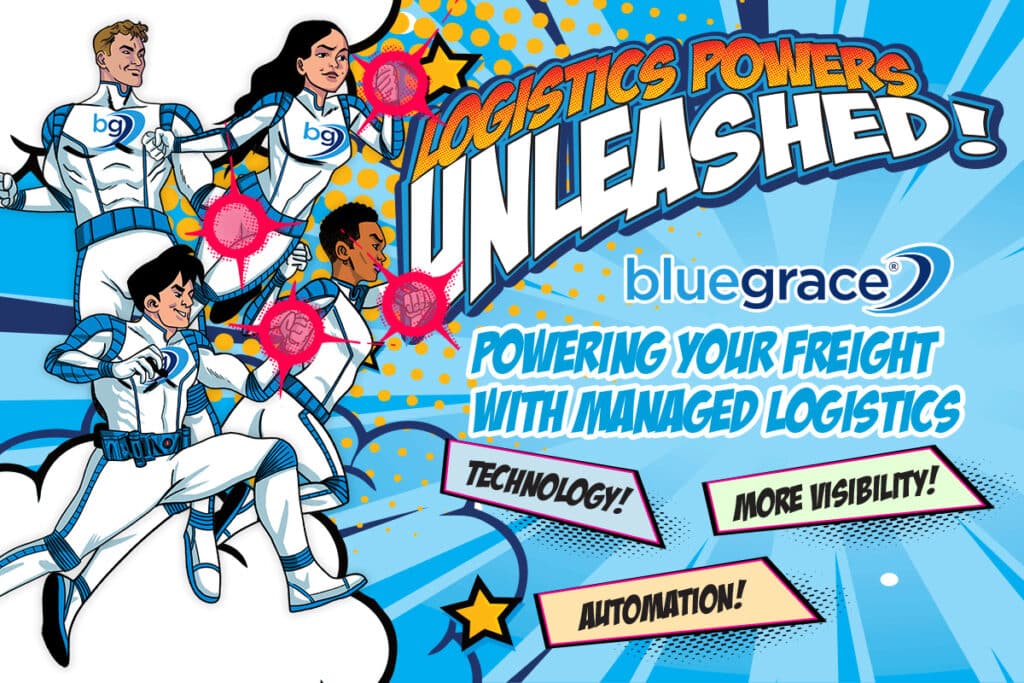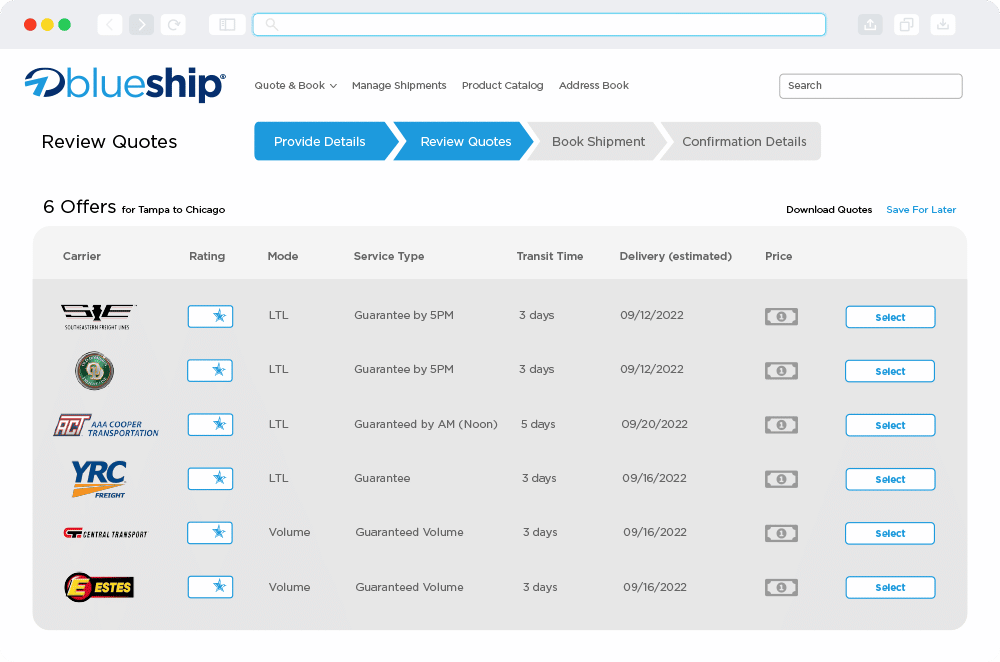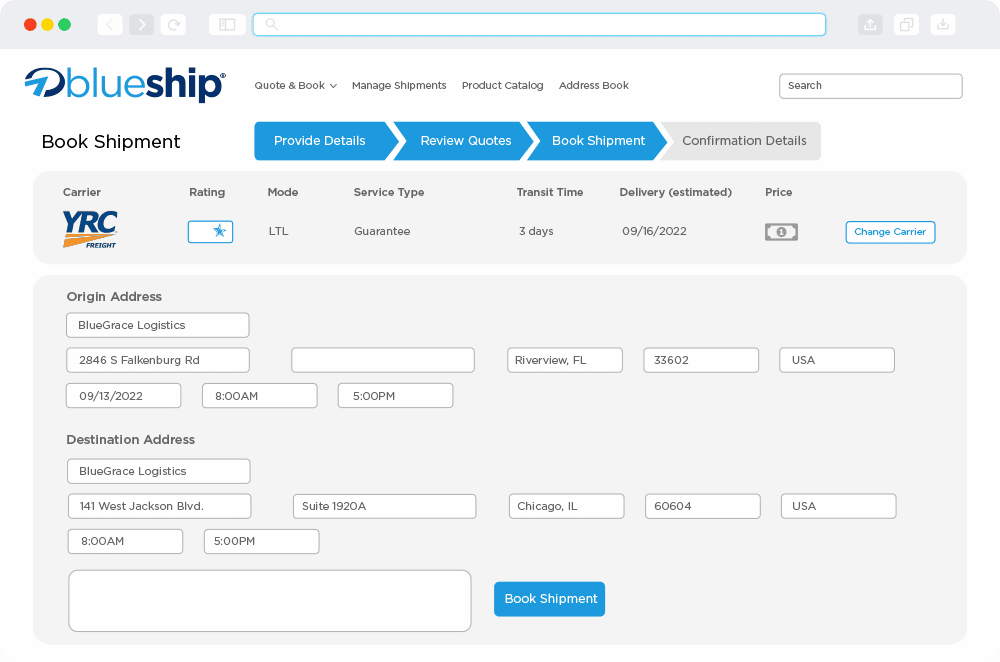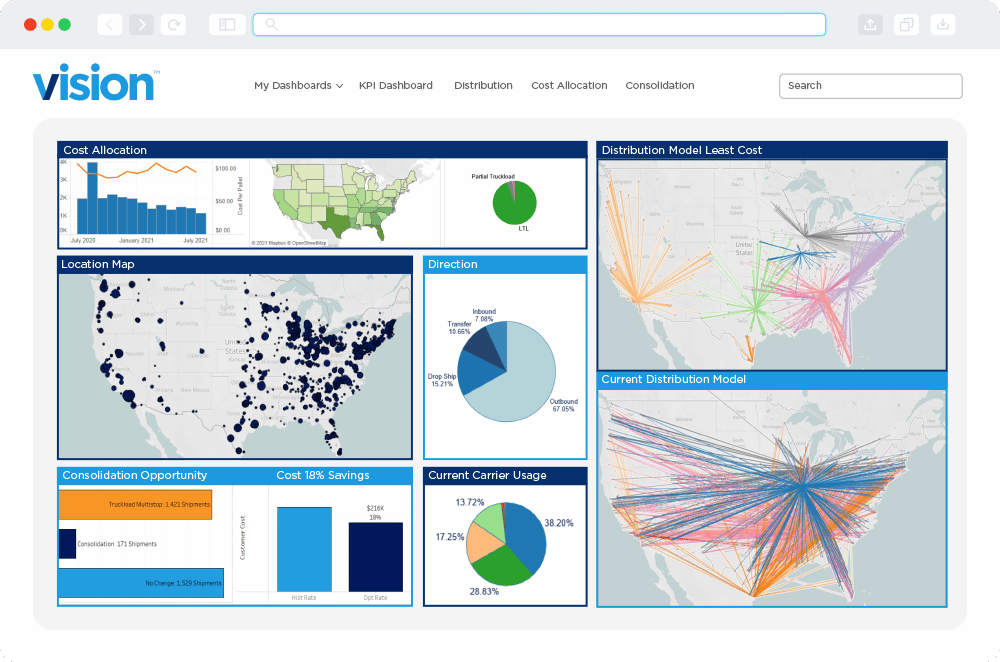
Dry Van 101: Why It's Essential for Cargo Transport
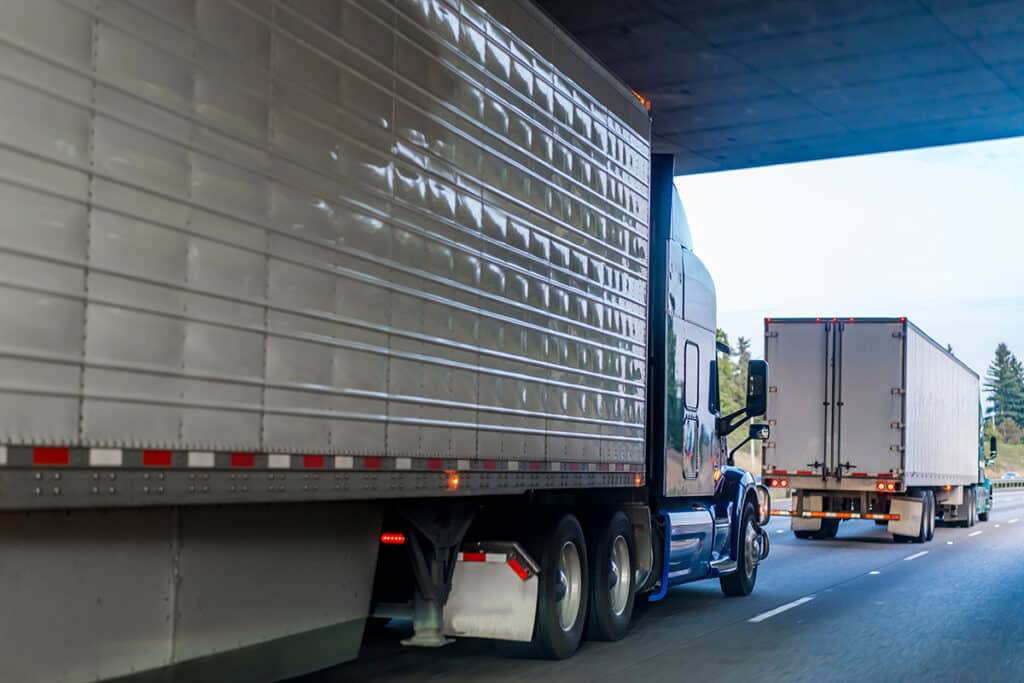
In the logistics world, there exists an often overlooked, yet indispensable element: the dry van. This dependable method of transportation quietly powers the movement of goods with efficiency and reliability.
While it may not boast the glamour of high-speed trains or the massive scale of cargo ships, the dry van plays an irreplaceable role in the global supply chain. It ensures your daily necessities, from electronics to food products, reach their destinations intact and on time.
Whether you’re new to logistics veteran or a seasoned pro, this guide will equip you with a deep understanding of dry vans and their critical role in moving everything from everyday goods to industrial supplies. So, fasten your cargo straps and join us as we explore what dry vans are, why they matter, and how they contribute to the seamless flow of products.
Welcome to Dry Van 101!
What is a Dry Van and What Are They Used For?
Get Started with a Dry Van Freight Quote
A dry van is a type of enclosed trailer used in the transportation and shipping industry. Commonly referred to as “box trucks” or “straight trucks”, the entire enclosure of a dry van is completely solid in order to protect the cargo inside from weather or theft.
These trailers are called “dry” because they do not have the ability for refrigeration or temperature-controlled shipping features, making them ideal for transporting non-perishable goods. Their interior is usually bare, allowing as much space as possible for loading and unloading your goods.
Dry vans come in all different sizes, making it possible to choose what size works best for the job at hand. Typical dimensions may range from 48 to 53 feet in length, 8 to 9 feet in width, and 8 to 9 feet in height, but the specific size of a dry van depends on the manufacturer and regional regulations.
Some dry van trucks have additional features like load securement points or extra doors to facilitate efficient loading processes. However, the standardized design of dry vans makes them compatible with common transportation methods like over-the-road trucking and intermodal transport.
Common Uses of Dry Vans
Dry vans are versatile and widely used throughout every industry — including retail, food and beverage, moving and relocation, construction, manufacturing, electronics, consumer goods, and many more. They’re usually preferred for transporting goods that require protection, including:
- Consumer Products: They are commonly used to transport items like electronics, clothing, furniture, and appliances.
- Non-Perishable Food: Dry vans are suitable for transporting dry food products such as canned goods, cereal, packaged snacks, and beverages.
- Retail Goods: Merchandise for retail stores, including stores in malls, supermarkets, and big-box retailers, is often transported using dry vans.
- Industrial Supplies: Dry van trucks are used to transport machinery parts, raw materials, and various industrial supplies.
- Building Materials: Items like lumber, bricks, drywall, and construction materials are frequently hauled in dry vans.
- E-commerce Shipments: With the rise of e-commerce, they are crucial for delivering packages and products ordered online.
The enclosed structure of a dry van is ideal for safeguarding fragile items and maintaining their quality throughout transit.
Advantages of Dry Van Shipping
Dry van shipping has numerous advantages over many other transport methods. So, let’s take a look at some of the benefits it offers for your business:
1. Increased Protection and Security
These enclosed trailers provide a secure and weather-resistant environment for your cargo, keeping your items safe from the rain, snow or wind while in transit. Also, enclosed containers deter theft and tampering, reducing the risk of unauthorized access to your valuables.
2. Versatility
Dry vans can easily accommodate a wide variety of goods, making them highly adaptable to the needs of different industries and types of cargo.
3. Efficient Loading
By having a single, accessible loading point, dry vans simplify and expedite the loading and unloading process. This allows for quick turn-around times at distribution centers and delivery points.
4. Intermodal Compatibility
Dry vans integrate seamlessly with the intermodal transportation process, allowing for easy transfer between trucks, trains, and ships without any need for repackaging.
5. Branding Opportunity
The exterior walls of dry vans are perfect for customizing with company logos or branded messaging. They can serve as mobile advertisements while on the road and go a long way toward improving your brand’s visibility.
What Is the Difference Between Dry Vans vs. Other Types of Trailers?
The distinction between dry vans and other trailer types lies in their design and functionality. Here’s a breakdown of some key differences between them:
Flatbed Trailers
Unlike enclosed dry vans, flatbeds have an open platform. This means they offer minimal protection from the elements. Because of this, it makes them ideal for hauling oversized or irregularly shaped cargo, like machinery or building materials. This could include pipes, metal bars, concrete, uncut wood, stone, bricks, or building scaffolding.
Refrigerated Trailers (Reefers)
While dry vans are suitable for non-perishable goods, refrigerated trailers are specifically designed with cooling or heating systems for temperature-sensitive items. They’re typically utilized in food, pharmaceuticals, or agricultural settings, where the cargo being transported can spoil if the temperature fluctuates.
Curtain-Side Trailers (Conestogas)
Curtain-side trailers, often referred to as Conestogas, feature retractable curtains on the sides, setting them apart from traditional dry vans. These trailers offer a balance between accessibility and cargo protection, combining the benefits of an open platform with the added security of a covering. While they may not provide the same level of weatherproofing as dry vans, Conestogas are highly versatile, making them an excellent choice for industries requiring quick access to cargo. Their retractable curtains enable loading and unloading from both sides, facilitating efficient and organized logistics processes. This makes Conestogas well-suited for the transportation of goods like packaged products, machinery, and general freight, especially when accessibility is a priority.
Ensuring Safety and Maintenance When Transporting Dry Van Freight
When it comes to transporting your valuable freight using a dry van, safety and proper maintenance is important. Ensuring the well-being of your cargo and those on the road requires careful attention to detail and adherence to best practices. To help you navigate this, here are some essential tips for safely and securely transporting your freight with a dry van:
Regular Inspections
Conduct thorough pre-trip and post-trip inspections to identify any potential issues. Check for signs of damage, wear, or mechanical problems that may compromise safety. Addressing these promptly can prevent accidents and ensure the safety of both the driver and your cargo.
Tire Maintenance
Keep tires properly inflated and ensure they have sufficient tread depth. Well-maintained tires improve fuel efficiency, handling, and overall safety on the road.
Brake System Checks
Regularly inspect and maintain the brake system. Faulty brakes can lead to accidents and endanger lives. Replace worn brake pads and address any abnormalities in breaking performance.
Load Securement
Properly secure cargo using appropriate restraints like straps and load bars. A shifting load can cause imbalance, affect handling, and potentially lead to accidents. Adequate load securement ensures both road safety and cargo integrity.
Structural Integrity
Monitor the dry van’s structural components, including the roof and flooring. Any signs of rust or damage should be promptly repaired to maintain the structural integrity of the trailer.
Dry Van Rates and Cost Considerations
The cost for dry van freight can vary quite a bit depending on the job. Factors that typically influence this include:
- Fuel costs
- Driver wages
- Maintenance and repairs
- Insurance to cover damage or loss
- Administrative expenses like dispatching or paperwork
- Market demand, which fluctuates with industry trends and seasonal changes
- Route distance and complexity
- Load weight
So how do you ship more efficiently? Here are a few helpful things to take into consideration that can save you money!
1. Route Planning
Begin by planning out your route to minimize mileage and transit time. This is a great opportunity to utilize a GPS like Google Maps or dedicated routing software like Waves, to identify the best path. These tools not only optimize routes to reduce mileage and fuel consumption but also consider real-time traffic data to avoid congested routes, further decreasing transit time. Beyond cost savings, efficient route planning enhances safety by steering clear of risky or hazardous routes.
2. Load Optimization and Consolidation
To properly optimize your load, you’ll need to maximize your load capacity without exceeding legal weight limits. Doing so minimizes shipping costs per unit. Consolidating shipments whenever possible reduces the need for extra trips, saving on fuel, labor and maintenance expenses.
3. Freight Negotiation and 3PL
Another effective strategy for cost savings is to foster relationships with carriers. Building strong, reliable relationships can open the door to negotiating better rates. Carriers often prioritize consistent and cooperative shippers.
Additionally, consider exploring the benefits of partnering with a third-party logistics (3PL) provider. 3PLs bring expertise in logistics management and have access to an extensive network of carriers. They can offer cost-saving strategies and efficient solutions to enhance your dry van operations.
4. Risk Management
Protect your cargo by purchasing cargo insurance, which provides financial security in case of accidents, theft or damage during transport. Also, implementing risk management strategies like secure parking, tracking systems, and security audits. These measures minimize potential losses and ensure the safety of your cargo during transport.
The Role of a 3PL in Dry Van Shipping
Third-party logistics (3PL) can do a lot to simplify and streamline your shipping processes. By outsourcing supply chain management functions to a 3PL, companies can unlock a range of benefits, like:
- Route optimization
- Load planning
- Carrier selection
- Real-time tracking
- Ensuring compliance with regulations
Whether you’re a small start-up or a large enterprise, the advantages of partnering with a 3PL are substantial. Small businesses can reduce operational complexities and overhead costs, allowing them to focus on building their core operations. They also gain access to a vast network of carriers, expanding their reach and capabilities.
For large enterprises, a 3PL serves as a vital resource for managing the complexities of their dry van shipping operations efficiently. It allows them to continue expanding their operations without the burden of internal logistics management. This strategic partnership plays a crucial role in maintaining high levels of customer satisfaction.
Safely and Easily Ship Your Freight with BlueGrace
As you can see, dry vans are the backbone of the transportation and logistics industry, offering a reliable and secure solution for shipping your cargo. Their efficiency and versatility make them indispensable for transporting non-perishable goods across various industries, forming a key part of the supply chain.
At BlueGrace, we’re committed to simplifying your freight management. As a trusted full-service third-party logistics (3PL) provider, we’ve cultivated strong partnerships with a vast network of reputable carriers. This means you can count on us to deliver the best shipping solutions available.
Ready to experience the benefits? Request a quote from us today and discover how we can optimize your logistics and reduce costs.
Recent Posts
Adapting to Retail Demand Fluctuations: Solutions for Food and Beverage Shippers
Adapting to Retail Demand Fluctuations: Solutions for Food and Beverage Shippers
Read The Logistics Blog®
Predictive and Prescriptive Analytics in Logistics
Predictive and Prescriptive Analytics in Logistics
View Whitepaper
Hurricane Preparedness Guide
Hurricane Preparedness Guide
View Whitepaper
